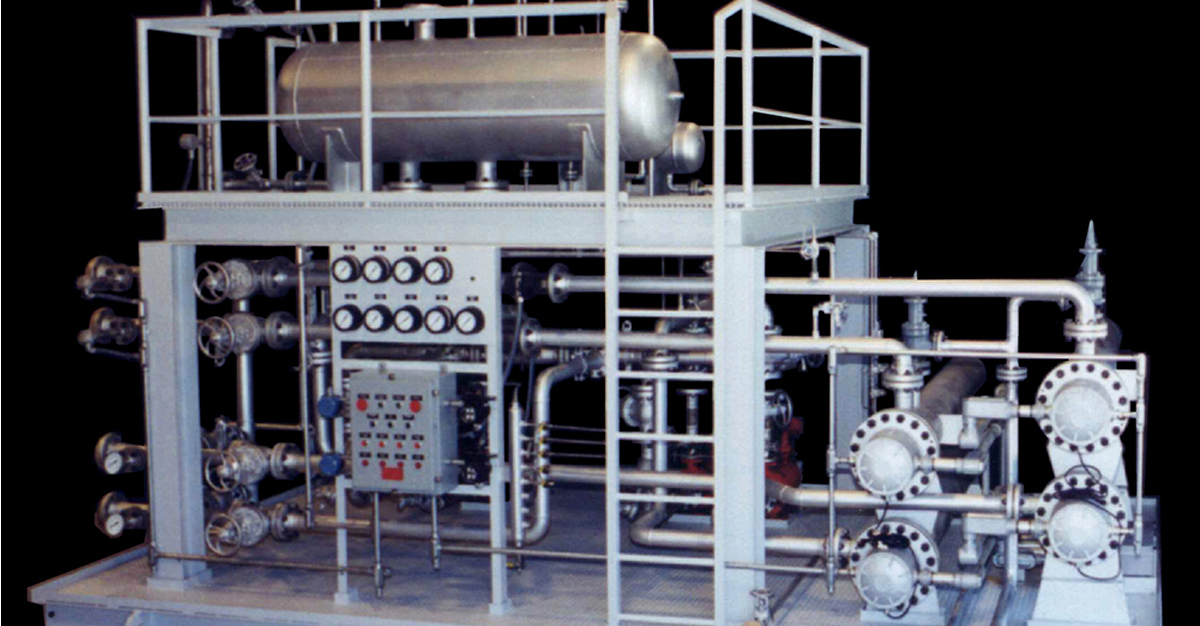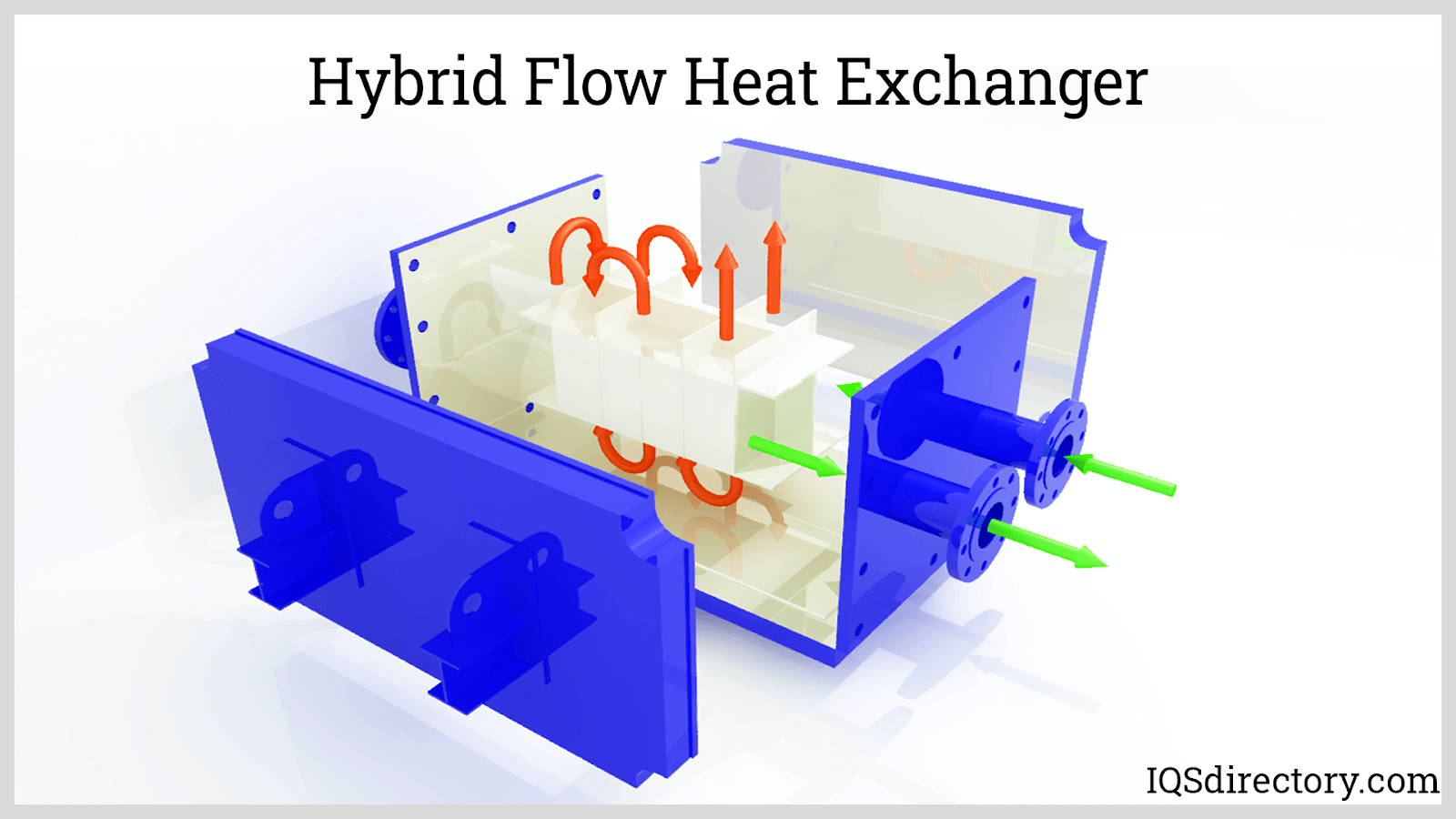Exploring the Potential of DVS Heat Transfer Systems in Modern Thermal Management
Advancements in Heat Transfer Solutions: What You Need to Know for Ideal Performance
Advancements in Heat transfer systems are changing performance throughout various markets. Advanced products like graphene and nanofluids assure substantial enhancements in thermal conductivity. On the other hand, the assimilation of IoT and artificial intelligence supplies chances for real-time surveillance and boosted power performance. The landscape of thermal administration is quickly advancing. Understanding these growths is vital for accomplishing excellent system performance and sustainability in the future. What particular advancements are forming this makeover?
Emerging Materials for Improved Heat Transfer

Advanced Heat Exchanger Styles
While standard Heat exchangers have actually offered their objective in various applications, advanced layouts are currently arising to satisfy the enhancing demands for performance and performance. These ingenious styles, such as plate, shell-and-tube, and finned-tube Heat exchangers, incorporate boosted area and improved circulation patterns to enhance thermal transfer prices. Additionally, compact layouts permit minimized space needs without compromising performance. Advanced products, such as compounds and corrosion-resistant alloys, in addition improve sturdiness and efficiency under severe conditions. Simulation modern technologies and computational fluid characteristics are increasingly employed to refine these designs, ensuring peak Heat transfer attributes. As industries look for to lessen power intake and optimize output, the fostering of innovative Heat exchanger styles is crucial in accomplishing these objectives.
The Duty of Nanotechnology in Heat Transfer
Nanotechnology plays a necessary role in improving thermal conductivity within Heat transfer systems. By controling products at the nanoscale, scientists have attained significant improvements in power effectiveness. These developments not only maximize efficiency yet likewise add to even more lasting energy options.
Enhanced Thermal Conductivity
Considerable improvements in thermal conductivity have emerged through the application of nanotechnology, changing Heat transfer systems across various sectors. By including nanoparticles right into Heat transfer liquids and materials, researchers have attained amazing rises in thermal conductivity. These nanoparticles, such as carbon nanotubes, graphene, and metal oxides, boost the Heat transfer residential or commercial properties as a result of their high surface area and distinct thermal attributes. The resulting compounds show boosted performance in applications ranging from electronic devices cooling down systems to sustainable energy technologies. The capability to tailor the dimension, form, and composition of nanoparticles enables for maximized thermal monitoring remedies. Consequently, nanotechnology continues to play a crucial role in the advancement of much more reliable and reliable Heat transfer systems, paving the method for enhanced industrial applications.
Power Efficiency Improvements

Combination of IoT in Heat Transfer Systems
The integration of IoT in Heat transfer systems introduces the implementation of wise sensing units that boost operational performance. These sensors allow real-time information surveillance, enabling immediate adjustments and optimizations. This technological improvement has the possible to considerably boost performance and energy management in Heat transfer applications.
Smart Sensors Implementation
As Heat transfer systems progress, the assimilation of wise sensing units via the Web of Points (IoT) has actually become a transformative approach. These sensing units allow real-time monitoring of stress, flow, and temperature level rates, improving system effectiveness and reliability. By gathering and transferring information, they facilitate proactive upkeep, lowering the danger of system failings. Furthermore, clever sensors add to energy cost anchor savings by refining operational parameters based upon ecological problems. Their capability to assess abnormalities and patterns permits informed decision-making, ensuring peak performance of Heat transfer systems. As markets progressively adopt this innovation, the implementation of smart sensing units stands to change exactly how Heat transfer systems are taken care of, leading the way for greater sustainability and improved efficiency end results.
Real-Time Data Surveillance
Exactly how can real-time data monitoring improve the performance of Heat transfer systems? By integrating Web of Things (IoT) innovation, Heat transfer systems can leverage continuous data collection from wise sensors. This that site real-time tracking enables immediate analysis of circulation, stress, and temperature rates, enabling operators to determine ineffectiveness without delay. Consequently, adjustments can be made to enhance performance, lower energy usage, and extend tools life expectancy. Additionally, anticipating maintenance can be applied, decreasing unforeseen downtime and costly repair work. The capacity to picture performance metrics through dashboards enhances decision-making, cultivating a positive method to system management. Eventually, real-time data monitoring not just improves functional effectiveness yet likewise contributes to sustainability objectives within industrial procedures.
Energy Performance and Sustainability Trends
Energy performance and sustainability trends are improving the landscape of Heat transfer systems, driving development and compliance throughout different sectors. Organizations are significantly focusing on energy-efficient styles to reduce functional prices and lessen environmental impacts. The combination of eco-friendly energy resources is ending up being extra prevalent, making it possible for Heat transfer systems to run sustainably while meeting regulatory needs. Additionally, developments in modern technologies and materials promote lower energy usage and enhance total performance. Lifecycle assessments are also gaining traction, enabling companies to examine the environmental effect of Heat transfer systems from manufacturing to disposal. This focus on sustainability not only sustains corporate obligation but additionally positions organizations competitively in a market where customers progressively prefer environmentally friendly options. Consequently, power performance and sustainability remain essential factors to consider for future developments in Heat transfer technology.
Advancements in Thermal Management Solutions
While the need for efficient Heat transfer continues to rise, innovations in thermal management solutions are emerging to resolve both efficiency and sustainability challenges. Advanced products, such as stage adjustment materials and nanofluids, are being developed to enhance Heat transfer efficiency - DVS Heat Transfer Systems. These products boost thermal conductivity and permit far better temperature law in numerous applications. Furthermore, innovations like active thermal control systems are gaining grip, making it possible for real-time modifications to handle Heat flow efficiently. These systems add to energy cost savings and decrease the environmental impact of thermal processes. Additionally, the assimilation of IoT in thermal monitoring helps with tracking and anticipating maintenance, making certain enhanced efficiency and long life of Heat transfer systems. Generally, these advancements represent substantial strides toward more sustainable thermal monitoring practices
Future Instructions in Heat Transfer Technology
Arising advancements in thermal management solutions signify an encouraging future for Heat transfer technology. Scientists are progressively concentrating on establishing products with remarkable thermal conductivity and enhanced power effectiveness. Innovations such as nanofluids, which contain suspended nanoparticles, use substantial renovations in Heat transfer efficiency. In addition, the combination of wise materials that adjust to differing temperature conditions is gaining traction, permitting more efficient and receptive systems. The rise of additive production strategies is likewise allowing the design of complicated Heat exchanger geometries that enhance fluid flow. The execution of device why not look here understanding formulas is prepared for to transform the optimization of Heat transfer systems, helping with anticipating upkeep and efficiency improvement. Collectively, these developments are poised to change the landscape of Heat transfer innovations in numerous sectors.

Frequently Asked Questions

Just how Do I Select the Right Heat Transfer System for My Application?
Choosing the appropriate Heat transfer system includes evaluating application requirements, including temperature level arrays, fluid properties, and performance needs. Assessing system kinds, upkeep factors to consider, and cost-effectiveness also plays an essential function in making an educated choice.
What Are the Maintenance Requirements for Advanced Heat Exchangers?
Maintenance requirements for sophisticated Heat exchangers generally consist of regular evaluations, checking for leakages, cleansing of surfaces, and guaranteeing optimal flow prices. Adhering to manufacturer standards assurances reliable procedure and extends the devices's life-span.
Just How Do Ecological Variables Influence Heat Transfer Effectiveness?
Ecological factors substantially affect Heat transfer efficiency. Variations in temperature, humidity, and air movement effect thermal conductivity and convective Heat transfer, inevitably affecting system efficiency and demanding consideration throughout the design and procedure of Heat transfer systems.
What Security Standards Relate To Heat Transfer Systems?
Security criteria for Heat transfer systems generally consist of guidelines from companies such as ASME and ASTM. DVS Heat Transfer Systems. These requirements address products, design, and operational practices to assure integrity, efficiency, and protection versus risks in numerous applications
How Can I Fix Usual Heat Transfer System Issues?
Repairing typical Heat transfer system concerns entails looking for leakages, making sure correct liquid flow, examining insulation stability, and verifying temperature differentials. Recognizing these aspects can assist keep system performance and prevent additional problems.
Nanotechnology plays a vital function in boosting thermal conductivity within Heat transfer systems. Substantial improvements in thermal conductivity have emerged through the application of nanotechnology, reinventing Heat transfer systems across various sectors. Developments in thermal conductivity with nanotechnology have paved the way for impressive renovations in power performance within Heat transfer systems. Power efficiency and sustainability patterns are reshaping the landscape of Heat transfer systems, driving technology and conformity throughout numerous industries. The combination of IoT in thermal administration facilitates monitoring and anticipating upkeep, ensuring optimized efficiency and longevity of Heat transfer systems.